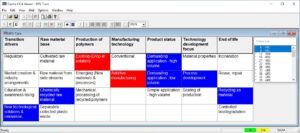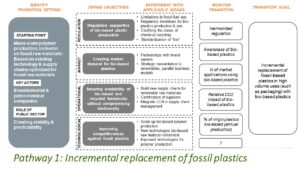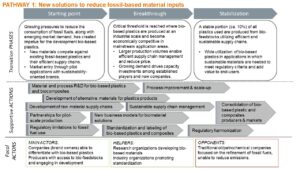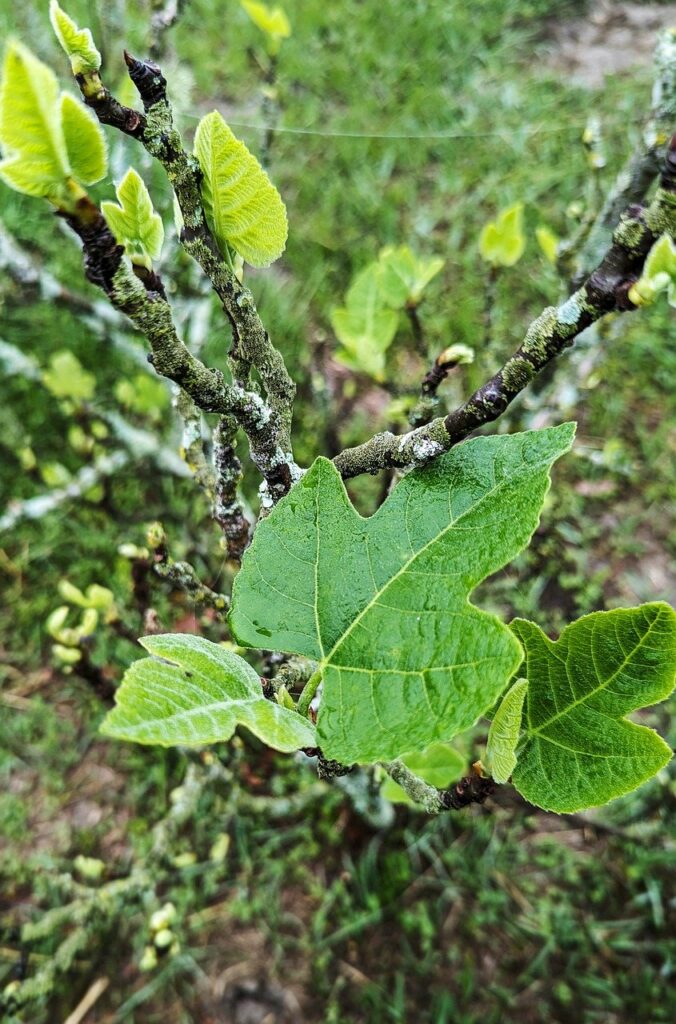Author: Anna Leinonen, VTT
Transitional processes are complex, and people often have different opinions on problems and solutions regarding them. This ambiguity makes it hard to coordinate efforts towards sustainability goals. Therefore, we need tools to help set common goals, align interests, and create shared plans for future transitions.
This writing tells the story of collective meaning-making processes that took place in the ValueBioMat project ─ a multidisciplinary research project that focused on supporting the transition of the plastics industry towards bio-based and circular solutions. The journey to a common understanding of the transition required three attempts to explore the future: first using a systematic scenario method, then drawing on transition theory, and finally concentrating on supporting communication and joint meaning-making.
First attempt: Scenarios and confusion
The starting point for the joint knowledge production process was an analysis of the present system of plastics production, use, and circulation. The purpose of this stage was to develop a general understanding of the main barriers to and emerging solutions for a transition towards sustainable plastics system. Knowledge was produced in project workshops and interviews with plastics value chain actors. The generated insights provided a backdrop for the scenario process, which was initiated to explore the possible futures of the plastics production and consumption system and to bring together insights from the multi-disciplinary research group.
To organize the scenario process, we used a method called morphological analysis. Morphological analysis [i] is a systematic and semi-quantitative method that is good for structuring complex issues for scenario-making. It starts by defining the scenario space with key system parameters and their possible values. Then, all parameter values are checked for mutual consistency to remove all value pairs that do not fit together. The challenge is that parameters and variables must be defined unambiguously for the analysis to work well. Achieving this often requires many iterations. Another challenge is that the method usually produces many consistent combinations, which form the basis for final ‘what-if’ scenarios. Therefore, it’s important for the user to clearly understand the purpose of the analysis and the system being studied to get useful results.
These challenges realized in the ValueBioMat project. We started with the formulation of the scenario space in a joint project workshop, and after that the selected group of project researchers continued doing the cross-consistency assessment in a series of meetings. Through the process, we found that the initial selection of parameters and parameter values was too general and abstract, which inhibited the formulation of meaningful “what-if” scenarios. Consequently, we had to start second iteration and narrow the scope of the scenario space. Based on the redefined and more focused scenario model, we were able to complete the consistency assessment. Analysis produced 214 consistent combinations for scenario-making (see figure 1) putting us facing the second challenge: Which variable should be chosen as the defining variable for creating meaningful scenarios?

Figure 1. Potential scenario combination in the morphological table.
To work through this dilemma, we made several explorations with the morphological analysis tool, testing out different logics to combine the “what-if” scenarios. We used different variables to define the scenarios, such as systemic transition drivers, polymer category, or plastic product category, and tried to interpret their implications for the transformation of the plastics system. Through this interpretive process, we started to draw from transition theory[i] and shift our focus towards different transition mechanisms. We formulated three outlines for transition pathway storylines:
- The first pathway foregrounded a transition driven by the gradual replacement of fossil raw materials in polymer production with renewable ones. Established oil and petrochemical companies would play a key role in this transition.
- The second pathway focused on introducing new bio-based or circular plastics as alternatives to traditional fossil-based plastics. In line with transition theory, it highlighted the interactions between niche innovations and mainstream practices, and the challenges of up-scaling up the use of new materials.
- The third pathway aimed at increasing plastic waste recycling through mechanical and chemical methods. It explored how the entire plastics value chain would change with large-scale recycling, driven by regulations and innovations from recycling companies.
At this stage, our approach shifted from scenario-making to further refining and communicating the transition pathways with all project researchers as well as external stakeholders.
Second attempt: Complexities of sustainability transition
To communicate the initial transition pathway storylines to others, and to collectively improve them, we created visual versions of them (see figure 2). We used ideas from roadmapping[i] and transition management approach[ii] to structure these drawings. Each pathway included the transition setting, i.e. starting conditions and key actors, shorter-term objectives, applicable means for promoting transition, and monitoring progress, and the overall transition goal. For example, the first pathway described the current system based on mass-produced plastics from fossil fuels, identified goals related to regulations, markets, operations, and technology, and listed ways to achieve these goals. Finally, it identified key indicators to monitor progress and defined the overall goal as gradually replacing fossil-based plastics with bio-based plastics.

Figure 2. Pathways structured according to transition theory.
To enable collective sharing of ideas with the project researchers, we organized a World Café[i] workshop. Following the method, the workshop participants discussed in small groups each of the three transition pathways adding on the outcomes of other groups. While the workshop was successful in facilitating discussion on the broad themes around each pathway, it was more difficult for participants to link one’s own research topics to the general transition themes. In addition, the project researchers found the transition pathway visuals too complicated and difficult to understand. For example, the distinction between the first and second pathways ─ which both concerned the development of new polymer materials but were separated by different transitional logics ─ was not clear to the researchers, who were not familiar with transition theory, or various concepts of innovation studies.
Based on the workshop results, we understood that the pathway visuals needed more simplified and intuitive structure. We deemphasized the earlier theoretical influences and redefined the transition pathways around three transition goals: 1) incremental shift from fossil to bio-based plastics, 2) increasing material circulation, and 3) sustainability through reduced plastics consumption. The third transition goal was introduced based upon discussions in the workshop that emphasized the importance of changing mindsets from continuous extraction of natural resources and wasteful use of materials to various reuse concepts and reduction of consumption. Concurrently, we expanded the scope of the first pathway to encompass both the development of novel bio-based plastics and the incremental shift towards bio-based raw materials in mainstream polymer production.
Third attempt: Communicable and clear
The feedback from the project researchers’ workshop led us to rethink the pathway descriptions and visuals. Most notably, we restructured each pathway temporally into three subsequent “transition phases.” Inspiration for this shift came from the S-curve model of transition management[i]. This shift allowed us to simplify each pathway into a starting point, a breakthrough phase describing key events in bringing the changes into the mainstream, and a stabilization phase describing how the changes become part of widespread industrial and societal practice (see figure 3).

Figure 3. Final structure of the pathway visuals.
The simplified pathway visuals made them more useful for supporting dialogue between people with different backgrounds. This became especially clear when we used updated visuals to organize an online workshop with industry and policy stakeholders. Discussion in the stakeholder workshop concentrated on exploring the roles of key actors, and the contradictions and synergies of actions within and between the three transition pathways. Based on the outcomes of the stakeholder workshop, we were able to formulate the final pathway descriptions, which we summarized under three headings:
- Pathway 1: New solutions to reduce fossil-based material inputs
- Pathway 2: Efficient material capture and circulation
- Pathway 3: Sustainability through reduced plastics consumption
We will outline the content of these pathways in more detail in the second part of this blog post that will be published later.
[i] Ritchey, T. (2011). Wicked Problems – Social Support Modelling with Morphological Analysis (Vol. 17). Springer-Verlag https://doi.org/10.1007/978-3-642-19653-9
[i] Rotmans, J., Kemp, R., & Van Asselt, M. (2001). More evolution than revolution: transition management in public policy. foresight, 3(1), 15-31.
[i] https://theworldcafe.com/key-concepts-resources/world-cafe-method/
[i] Phaal, R., Farrukh, C. J., & Probert, D. R. (2004). Technology roadmapping—a planning framework for evolution and revolution. Technological forecasting and social change, 71(1-2), 5-26. https://doi.org/10.1016/S0040-1625(03)00072-6
[ii] Loorbach, D., & Wijsman, K. (2013). Business transition management: exploring a new role for business in sustainability transitions. Journal of cleaner production, 45, 20-28. https://doi.org/10.1016/j.jclepro.2012.11.002
[i] Geels, F. W. (2004). From sectoral systems of innovation to socio-technical systems. Research Policy, 33(6-7), 897-920. https://doi.org/10.1016/j.respol.2004.01.015

